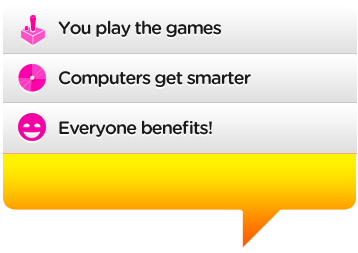Archive for the ‘Examples’ Category
Signs that Makes us Think and Feel
Sunday, November 30th, 2008One of the exercises that is most popular in my 3-day cognitive design workshop is redesigning signs to improve wayfinding, increase behavorial compliance (e.g. handwashing) instill pride, give the readers a little jolt of mental energy or otherwise leverage how minds actually work. It is a fairly straight forward application of cognitive design that gets an immediate response from your employees and customers. Besides it can be fun.
One of my favorite examples:
[Image source: The Semiotics of Toilet Signs]
A good way to tell patrons who the facility is for and more importantly to hurry it up when the toilet facilities are limited. Using images to generate empathy is often a better way of getting compliance than barking a command. Good cognitive design!
I just found a short (7 minute) YouTube video on Emotionally Intelligent Signs that provides some great examples of using Pecha Kucha to create signage that displays and encourages empathy. Check it out and then redesign a sign in your community or workplace.
Cognitive Design of Personal Med Dispensers
Friday, November 28th, 2008Resigning a pill bottle to meet specific cognitive needs doubles medication compliance.
Not taking meds properly is a major issue in healthcare. Approximately 125,000 people die from improperly taking meds every year in the US. As much as $100B-$300B is wasted in hospital visits, tests and lost productivity associated with lack of compliance with medication regiments.
 Studies show that we take our meds according to the doctor’s orders only 40-50% of the time. The problem is we forget (or fail to remember to remember to take our meds – a prospective memory need), are boggled by the complexity of what to do (imagine taking 10-15 different meds per day) and have self esteem issues (taking meds makes us appear weak or a burden). In short, prescription pill bottles we get from the pharmacy don’t meet the complex cognitive needs (prospective memory, multi-pill complexity, self esteem) associated with personal medication management.
Studies show that we take our meds according to the doctor’s orders only 40-50% of the time. The problem is we forget (or fail to remember to remember to take our meds – a prospective memory need), are boggled by the complexity of what to do (imagine taking 10-15 different meds per day) and have self esteem issues (taking meds makes us appear weak or a burden). In short, prescription pill bottles we get from the pharmacy don’t meet the complex cognitive needs (prospective memory, multi-pill complexity, self esteem) associated with personal medication management.
 Fortunately a number of smart pill boxes have been designed to help us solve this problem. According to an excellent article on Medication Compliance by Allan Naditz in the November issue on Telemedicine and e-Health, these devices can take compliance from the 40-50% level to the 90-95% level.
Fortunately a number of smart pill boxes have been designed to help us solve this problem. According to an excellent article on Medication Compliance by Allan Naditz in the November issue on Telemedicine and e-Health, these devices can take compliance from the 40-50% level to the 90-95% level.
 He discusses eight smart pill boxes ranging from simple reminder systems to personal med dispensers that provide multiple reminders and contact a service provider automatically if you don’t take your meds. A You Tube video outlining the problem and pitching the MD2 system, a top of the line model, can be found here.
He discusses eight smart pill boxes ranging from simple reminder systems to personal med dispensers that provide multiple reminders and contact a service provider automatically if you don’t take your meds. A You Tube video outlining the problem and pitching the MD2 system, a top of the line model, can be found here.
Share Your Knowledge and Earn $50K
Thursday, November 27th, 2008Patents are supposed to cover new inventions. But how do you know if they are something new? Ideally, you search what is called the prior art or all the world’s publicly available knowledge on the topic. But how do you do that in a timely and consistent way?
 One approach, used by the United States Patent and Trademark Office (USPTO) is to hire and train a small army of patent examiners and give them the best search tools and content money can buy.
One approach, used by the United States Patent and Trademark Office (USPTO) is to hire and train a small army of patent examiners and give them the best search tools and content money can buy.
 Another approach is to crowdsource it. If prior art exist someone out there already knows about it so the trick is to get them to share this knowledge with the patent examiner. There are a couple of groups trying to take this approach. The most recent is Article One Partners. They offer $50K to contributors (called advisors) that are first to provide prior art that invalidates a patent study. Each patent study includes one or more patents or patent applications. Further you can earn points in various ways (including providing feedback on the beta site) that qualifies you for profit sharing.
Another approach is to crowdsource it. If prior art exist someone out there already knows about it so the trick is to get them to share this knowledge with the patent examiner. There are a couple of groups trying to take this approach. The most recent is Article One Partners. They offer $50K to contributors (called advisors) that are first to provide prior art that invalidates a patent study. Each patent study includes one or more patents or patent applications. Further you can earn points in various ways (including providing feedback on the beta site) that qualifies you for profit sharing.
Designing for Happiness using Evidence
Saturday, November 15th, 2008One goal of cognitive design is to support or even create specific mental states (thoughts and feelings) in people. We do this by tweaking the features, functions and forms of artifacts or anything that is designed such as products, workflows and customer experiences. We don’t do this by tweaking randomly. Ideally, we use solid and sometimes emerging insights into how minds really work from cognitive science.
For example, the so-called science of happiness has been very much in the news lately. So it is not surprising when I get a question like:
How can we use the science of happiness to design organizations that make employees happier (more productive) and customers happier (more satisfied)?
[Chinese symbol for double happiness - employee and customer]
The literature on positive psychology and happiness studies is vast. Where should you start?
I like the approach of Hein Zegers. As a happiness researcher at the University of Leuven, a nearly 600-year-old Belgian center of learning and research, he stressses the importance of establishing evidence-based interventions.
The All Powerful Need to Change the World
Friday, November 14th, 2008Designing for how minds really work is about discovering unarticulated cognitive needs in the workplace or the market and creating an artifact (product, business model, management approach, etc.) to meet them.
When it comes to motivating employees, especially high performance knowledge workers, it is now broadly recognized that meaningfulness in the workplace is key. Creating meaning is the chief cognitive need of employees in knowledge intensive organizations.
But how do we do that, or how do you design for that? 
[Source: The McKinsey Quarterly, a journal of McKinsey & Company.]
Tim Brown, the CEO of the design/innovation machine known as IDEO gave a recent interview in the McKinsey Quarterly on Lessons from Innovation’s Front Lines (free registration required) that provides some insights:
“I think organizations have a hugely unfair advantage when it comes to innovation and incentives: people want to put things out in the world to leave their mark; they want to be creative. I think it’s a basic trait of human nature—if you give people the chance to do things that have an impact in the world, that is inherently motivating to them. Time and time again, I hear people say that putting something out in the world that didn’t exist before was a life-changing experience. ”
We have a fundamental and pressing cognitive need to put something new in the world and thereby change it and transform ourselves.
Play and Build Smarter Machines
Saturday, November 8th, 2008Making smart machines promises to free us from unnecessary mental labor and trigger a productivity boom in knowledge work. But programming knowledge into machines can be costly and tedious. It seems to improve productivity only in small well defined domains. Developing large or broad scale intelligent machines (e.g. the semantic web) requires new methods.
One such method is croudsourcing or tapping the engine of mass collaboration and peer production to do large-scale volunteer knowledge acquisition. We can effectively “teach a machine” (program knowledge for computer use) incidentally as we do other things like play a game.
To try it out go to the site Games with a Purpose.
You can have some fun in your spare time, tag content and improve the intelligence of a search engine.
Now that is how you design something for how minds (people and machines) really work.
Online Auction Site Taps Cognitive Biases
Thursday, November 6th, 2008On Swoopo you can bid using a new model called “entertainment shopping” to buy all sorts of items ranging from consumer electronics to household items. Here is how it works:
1. You give them money, at least $20. You buy the right to bid in an auction. It costs $1 to place a bid, win or lose.
2. Find an item you want and place a bid. This increases the price by 15 cents and automatically extends the bid clock by 20 seconds.
There are no reserves. By paying for the right to bid this creates the possibility you can get a super good deal (lottery like effect) and also means you will tend to bid not wanting to loose the investment you made (sunk cost bias).
Entertainment occurs in the last 20 seconds of the auction as you score a “kill” in the bargain hunting game or pump more and more dollars into it trying to win a lottery.
Let Me Create Order!
Tuesday, October 21st, 2008Pattern recognition, framing and sense making are fundamental to cognition or how we think and feel. All of these cognitive activities have one thing in common, they are geared towards creating order from sense perceptions, beliefs and even conflicting ideas. When we create order the pleasure center in our brain is activated. We are rewarded with a natural high – literally.
Herein lies the secrete sauce to many successful games and puzzles. They exploit our hardwired need to see and create order.
Wired magazine hit this theme well in a recent article that aruges Bejeweled and Bejeweled II are masterful examples of simple and addictive games that “exploit our desire for order”.
The idea is you swap the position of adjacent stones to create chains of three or more identical gems (a little bit of order).
With players investing $300M and 6 billion hours there is a powerful effect here.
OK maybe you don’t like that one but what about Solitaire or Sudoku sometimes referred to as “the crack cocaine for the brain”? Or perhaps you just doodle or organize the socks in your underwear drawer.
No matter, the lesson cognitive designers is clear. Creating order is a key way we generate mental energy. No matter what your design problem, consider adding features and functions that let users see and make order in a way that is natural given the context.
Extreme Cognitive Design Meets Road Rage
Friday, October 17th, 2008The Discovery Channel’s Prototype This! team used biofeedback and mind control systems to prototype a car that safely slows and even stops as the driver becomes angry.
If you have 40 minutes watch the full episode of the Mind Controlled Car. It is worth it! Or if you just have a few minutes check out this 3 min video on final testing.






